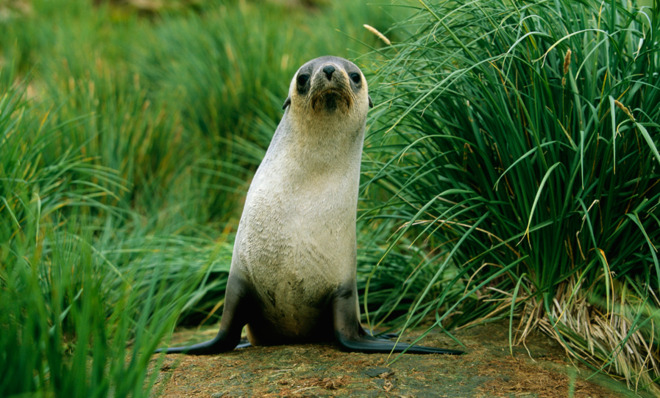You're ruining Antarctica
This is why we can't have nice continents

People are unwittingly smuggling aliens to Antarctica. No, it's not a vast conspiracy to provide a home base for lizard men, nor are the aliens quite as horrible as anything in The Thing. Rather, the problem is stowaway seeds and other plant and fungus parts hiding in the clothing, shoes, and other gear of scientists and tourists who are visiting Antarctica.
Antarctica is remote, but not as isolated as it once was. During the 2007/2008 Antarctic summer, more than 40,000 people visited the continent, and biologist Steven Chown and a team of researchers and volunteers were waiting for them. The team got 853 of these visitors to surrender everything they'd brought with them for inspection. While the visitors filled out questionnaires about where they'd come from and where else their equipment had been, the researchers ran vacuum cleaners over all the gear. They then emptied the vacuum bags at their lab and examined the haul.
They wound up with more than 2,500 seeds, some 500 fragments of moss and lichen, and a handful of fungi, fern fronds, algae and phytoplankton, representing hundreds of species. One traveler was carrying a whopping 472 seeds from 86 different species. Based on those numbers, the researchers estimate that during that summer, the total number of plant and fungus pieces introduced by all visitors was just over 91,000.
The Week
Escape your echo chamber. Get the facts behind the news, plus analysis from multiple perspectives.

Sign up for The Week's Free Newsletters
From our morning news briefing to a weekly Good News Newsletter, get the best of The Week delivered directly to your inbox.
From our morning news briefing to a weekly Good News Newsletter, get the best of The Week delivered directly to your inbox.
This isn't totally shocking. Throughout history, wherever humans have gone, they've had a menagerie of plant and animal hangers-on with them, catching free rides across continents and oceans. Sometimes these moves are intentional, like when explorers brought crops from home with them to new places or vice versa. Sometimes they're accidental, like a traveler who didn't realize he had a few seeds stuck in the treads of his boots. Taking an organism to another part of the world isn't necessarily a bad thing, but some introduced species, once they settle in to their new home, wreak havoc. These invasive species can out-compete native plants and animals for resources and throw ecosystems into disarray, with potential environmental and economic consequences.
Antarctica might seem pretty inhospitable for plant and animal immigrants, but it's had a few successful invasions already, like the small fly Eretmoptera murphyi, and annual bluegrass, a popular putting-green cover. Chown's team found that around half of the alien material that visitors dragged to Antarctica was from alpine, Arctic, or sub-Antarctic/Arctic regions where the travelers had last used their cold-weather gear. These species are already well adapted to the cold, and likely wouldn't have much trouble making themselves at home in Antarctica's harsh conditions.
As Antarctica welcomes more and more visitors, and grows warmer and loses ice cover, scientists worry that invasions may become easier and more commonplace, and that the native wildlife, accustomed to isolation, will be ill-equipped to deal with new neighbors. Already, in areas where bluegrass has become established, the amounts of the continent's two native flowering plants — Antarctic pearlwort and Antarctic hairgrass — have declined, and the ones that are left aren't able to photosynthesize as well. On some nearby sub-Antarctic islands there are as many, or more, non-native plants as there are native species. Additional invaders, or diseases they might bring, could very well wipe out some of these native species, some of which are found nowhere else in the world, and have a ripple effect on the Antarctic ecosystem.
And before you go blaming yourself too much — Chown and his team found that scientists were the worst offenders when it came to carrying hitchhikers. Researchers and their support staff brought in more seeds than tourists, even though the tourists outnumbered them 33,000 to 7,000. Part of the problem, the team says, is that scientists tend to use the same gear for multiple outings to different natural areas, like parks, reserves, and botanical gardens. Tourists, on the other hand, are likely to purchase new gear specifically for their Antarctic vacation.
A free daily email with the biggest news stories of the day – and the best features from TheWeek.com
To curb potential invasions, the researchers recommend that all visitors purchase new clothing and gear for each trip to Antarctica, or set aside "Antarctica-only" equipment solely for use there so it won't be contaminated in other parts of the world. Alternately, all gear should be washed and vacuumed whenever it's going from one major biogeographic region to another. You can never be too careful...


